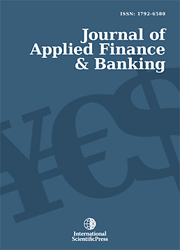Journal of Applied Finance & Banking
The Impact of COVID-19 on Taiwan’s Tourism Industry and Its Economic Linkages: An Input–Output Analysis
-
 [ Download ]
[ Download ]
- Times downloaded: 119
Abstract
The COVID-19 pandemic has profoundly disrupted global tourism, with Taiwan’s tourism industry experiencing unprecedented challenges due to international travel bans and strict domestic containment measures. This study examines the impact of COVID-19 on Taiwan’s tourism sector and its economic linkages using input–output (I–O) analysis. The I–O framework, adjusted through the RAS method, enables the estimation of sectoral interdependencies and multiplier effects across the Taiwanese economy from 2016 to 2019. Tourism-related industries—specifically wholesale and retail, accommodation and dining, transportation services, and entertainment—are evaluated in terms of backward and forward correlation effects, total industry linkages, and standardized measures of influence and sensitivity. The findings reveal that Taiwan’s tourism-related industries occupy a relatively modest position in the national economic structure, with weaker forward linkages that limit their capacity to serve as foundational suppliers for other industries. Retail and accommodation rank low in both forward and backward effects, while transportation and entertainment demonstrate moderate backward linkages, reflecting their role in stimulating upstream industries. The construction sector, though not directly categorized as tourism, exhibits the strongest backward correlation, underscoring its role as a complementary driver amplified by tourism development. The results highlight the vulnerability of Taiwan’s tourism sector to external shocks yet affirm its potential to stimulate complementary industries. Policy implications emphasize the need for resilience-building, diversification, and alignment of tourism strategies with broader industrial development goals.
JEL classification numbers: C67, E01, O53, Z32.
Keywords: Tourism Industry, COVID-19 Pandemic, Input–Output Analysis, Economic Linkages.
